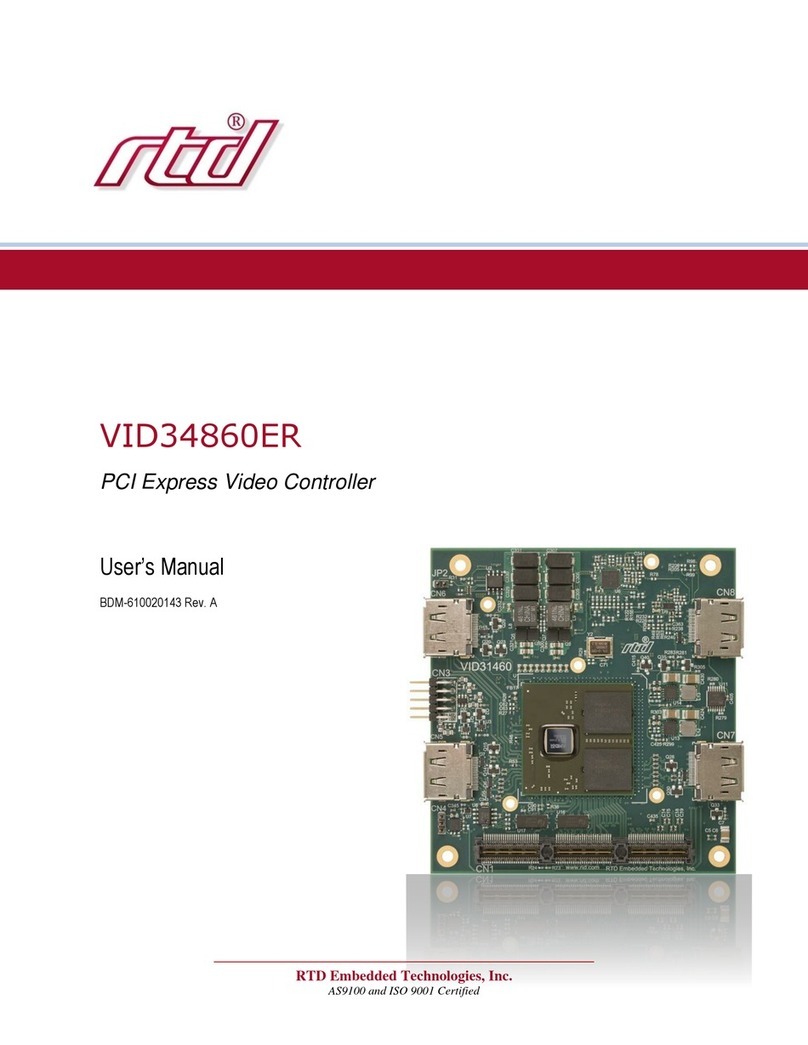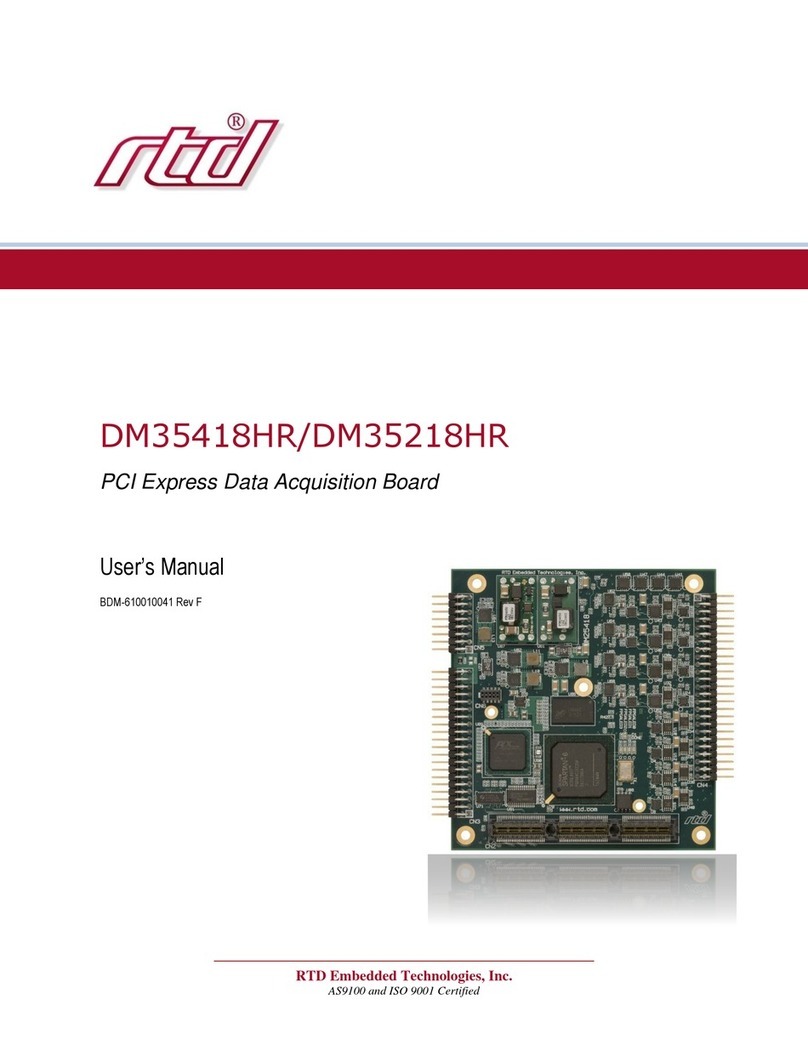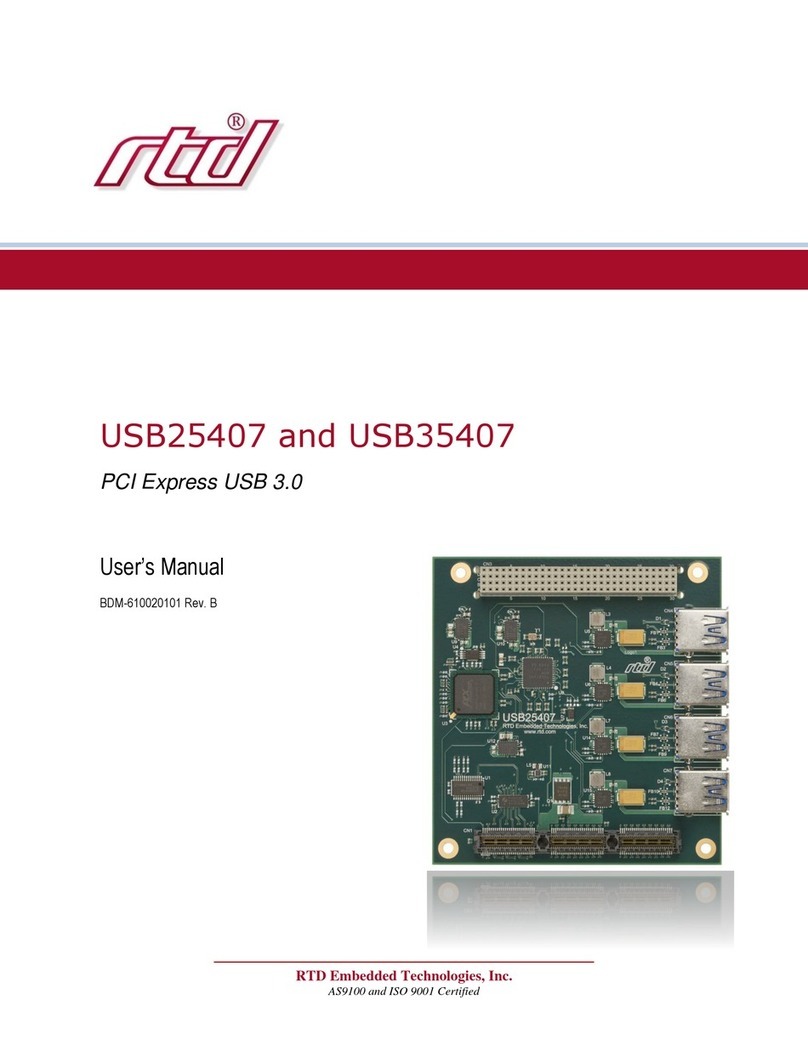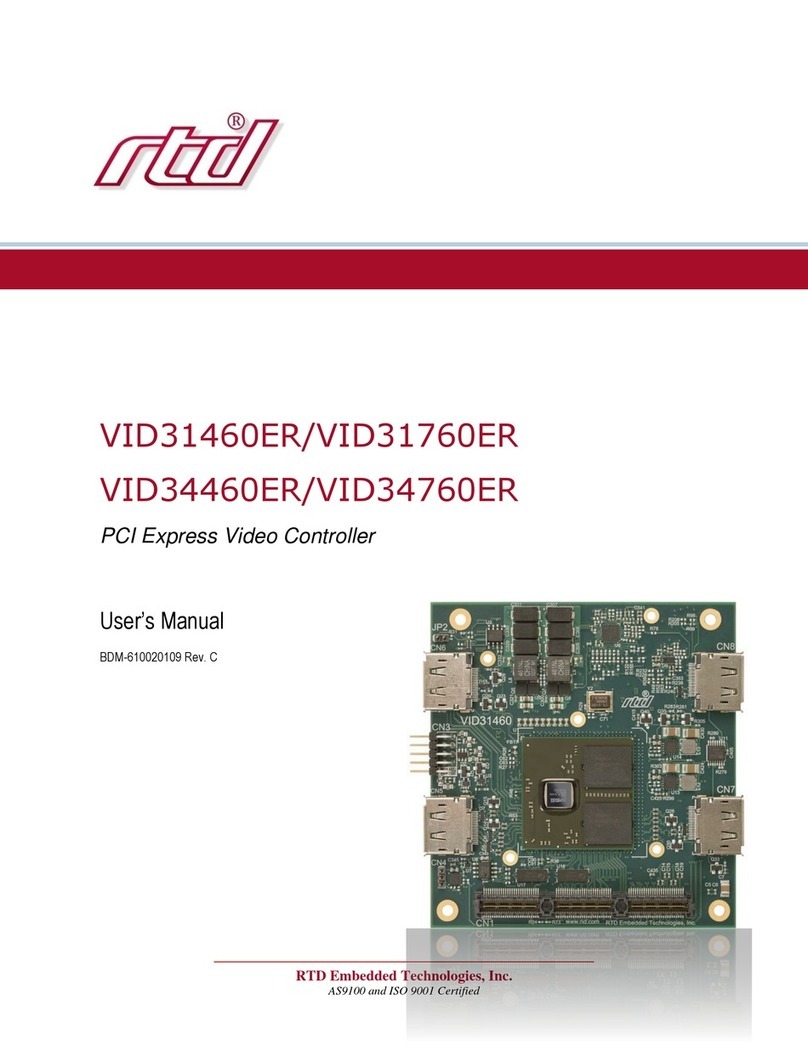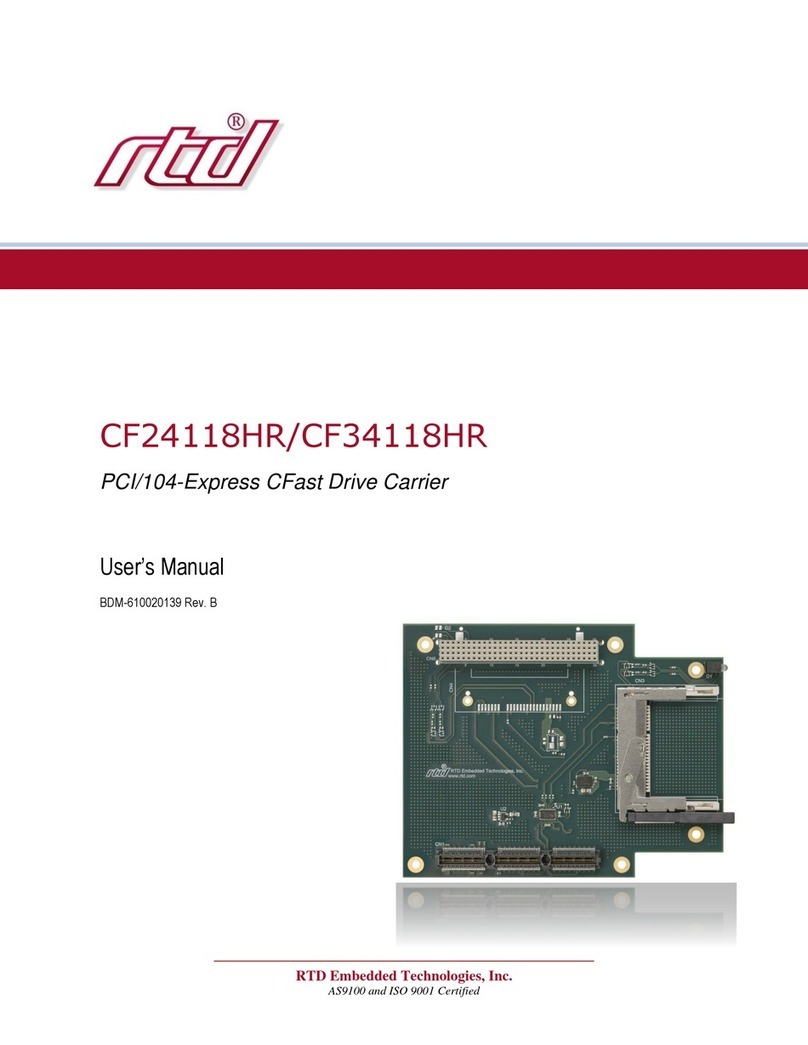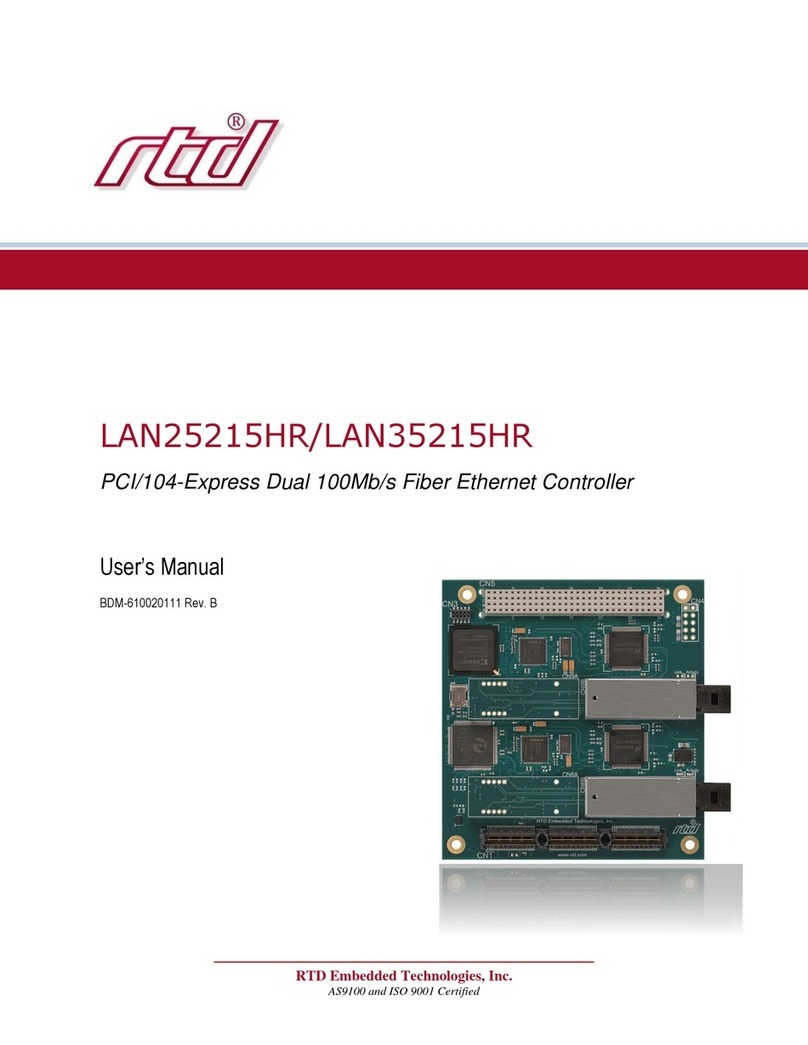RTD Embedded Technologies, Inc. | www.rtd.com vi ERES35105 User’s Manual
Table of Figures
Figure 1: Board Dimensions ................................................................................................................................................................................... 11
Figure 2: Board Connections .................................................................................................................................................................................. 12
Figure 3: Jumper Locations .................................................................................................................................................................................... 13
Figure 4: Example 104™Stack............................................................................................................................................................................... 14
Figure 5: IDAN Dimensions .................................................................................................................................................................................... 15
Figure 6: IDAN Front Panel Connector Locations .................................................................................................................................................. 16
Figure 7: Example IDAN System ............................................................................................................................................................................ 18
Figure 8: ERES35105 Block Diagram .................................................................................................................................................................... 19
Figure 9: 2-Wire LVDT Schematic .......................................................................................................................................................................... 23
Figure 10: 3-Wire LVDT Schematic ........................................................................................................................................................................ 24
Table of Tables
Table 1: Ordering Options ........................................................................................................................................................................................ 7
Table 2: Operating Conditions .................................................................................................................................................................................. 9
Table 3: Electrical Characteristics ............................................................................................................................................................................ 9
Table 4: J1 Input / Output Pin Assignments .......................................................................................................................................................... 12
Table 5: IDAN-ERES35105HR-xS Panel Connectors and Mating Connectors ..................................................................................................... 16
Table 6: IDAN Input / Output Pin Assignments ..................................................................................................................................................... 17
Table 7: Bandwidth Filters ...................................................................................................................................................................................... 20
Table 8: Resolver Input Connections...................................................................................................................................................................... 21
Table 9: Resolver Jumper Settings......................................................................................................................................................................... 21
Table 10: Synchro Input Connections..................................................................................................................................................................... 22
Table 11: Synchro Jumper Settings........................................................................................................................................................................ 22
Table 12: 2-Wire LVDT Input Connections............................................................................................................................................................. 23
Table 13: 2-Wire LVDT Jumper Settings................................................................................................................................................................ 23
Table 14: 3-Wire LVDT Input Connections............................................................................................................................................................. 24
Table 15: 3-Wire LVDT Jumper Settings................................................................................................................................................................ 24
Table 16: Direct Input Connections ........................................................................................................................................................................ 25
Table 17: Direct Input Jumper Settings .................................................................................................................................................................. 25
Table 18: Internal Reference Connections ............................................................................................................................................................. 26
Table 19: Internal Reference Jumper Settings ....................................................................................................................................................... 26
Table 20: Differential External Reference Connections.......................................................................................................................................... 27
Table 21: Differential External Reference Jumper Settings.................................................................................................................................... 27
Table 22: Single-Ended External Reference Connections ..................................................................................................................................... 27
Table 23: Single-Ended External Reference Jumper Settings ............................................................................................................................... 27
Table 24: Identifying the ERES35105..................................................................................................................................................................... 28
Table 25: Index and Data Registers ....................................................................................................................................................................... 28
Table 26: Board Registers ...................................................................................................................................................................................... 31
Table 27: Channel Mode Shift Register.................................................................................................................................................................. 33
Table 28: Channel Modes....................................................................................................................................................................................... 34
Table 29: Velocity Trim Shift Register .................................................................................................................................................................... 34
Table 30: Excitation Amplitude Shift Register ........................................................................................................................................................ 35
Table 31: Excitation Amplitude Values ................................................................................................................................................................... 35






